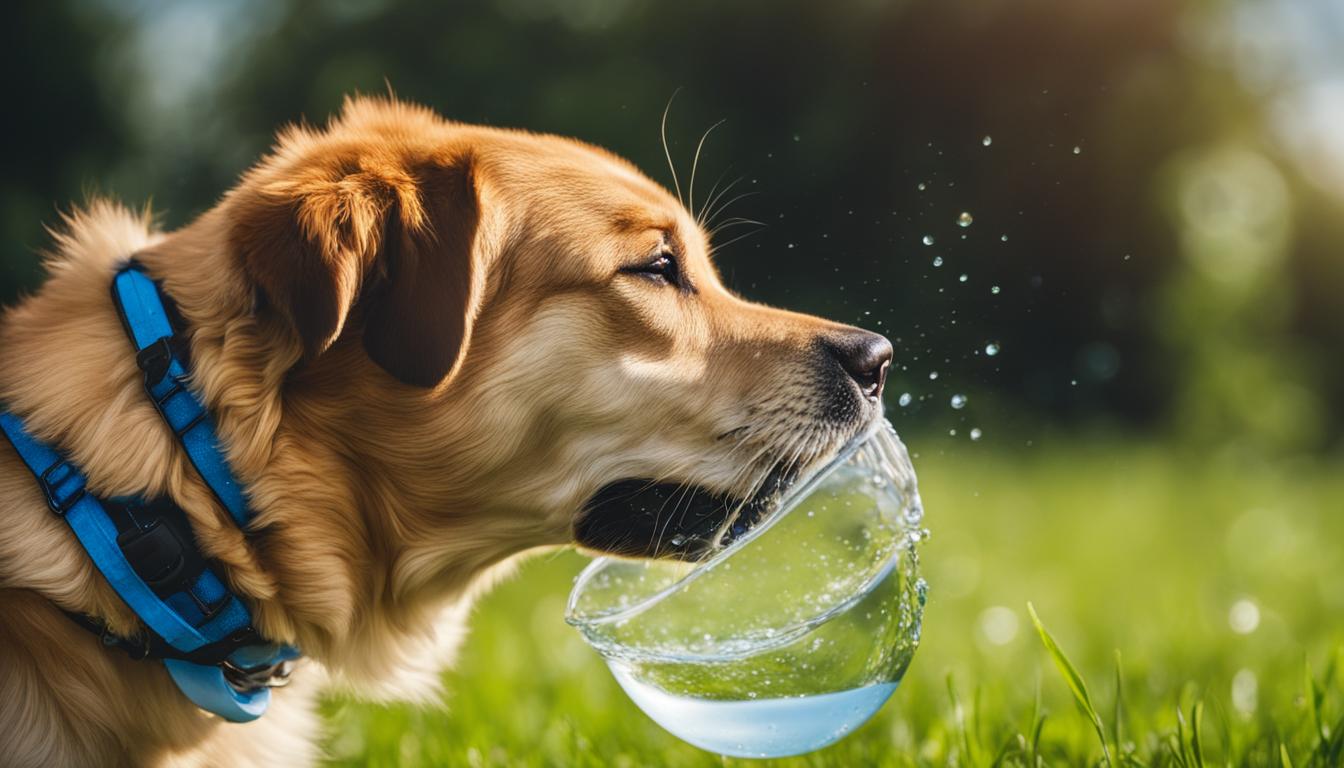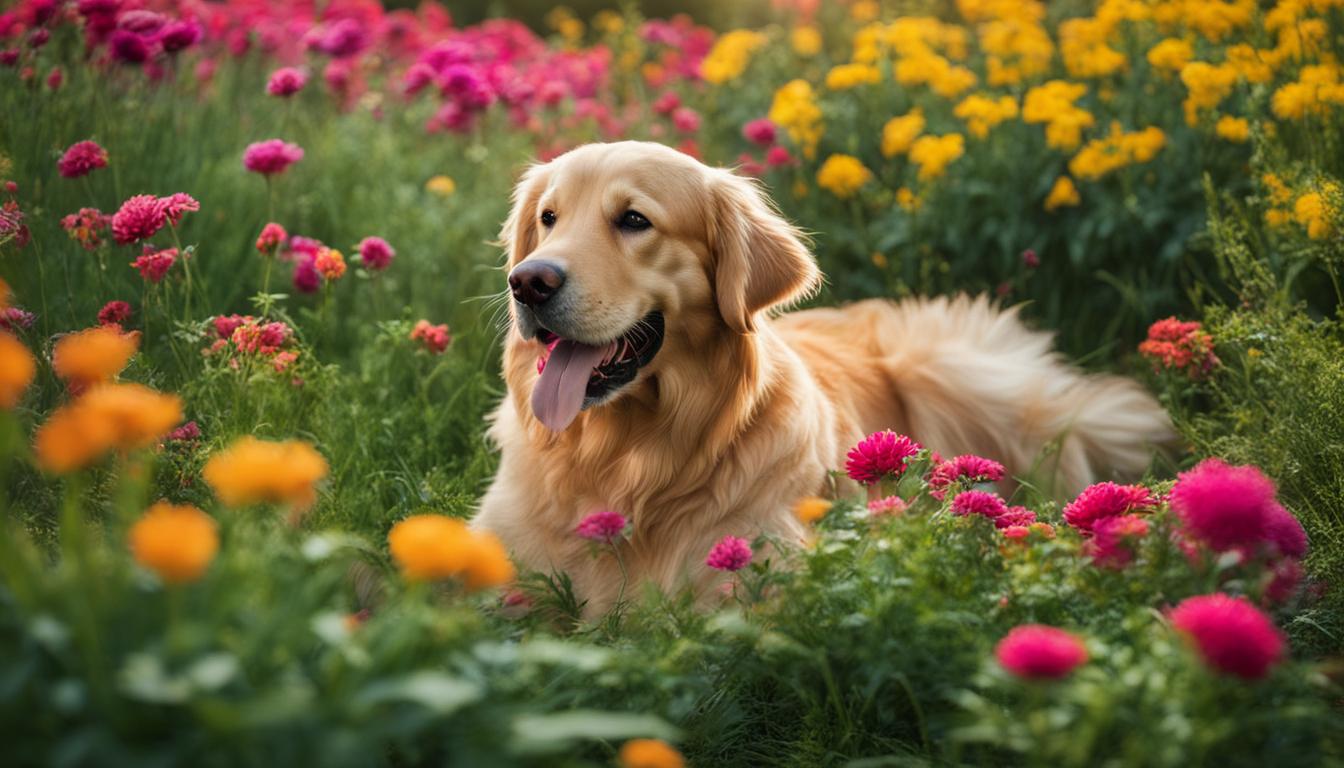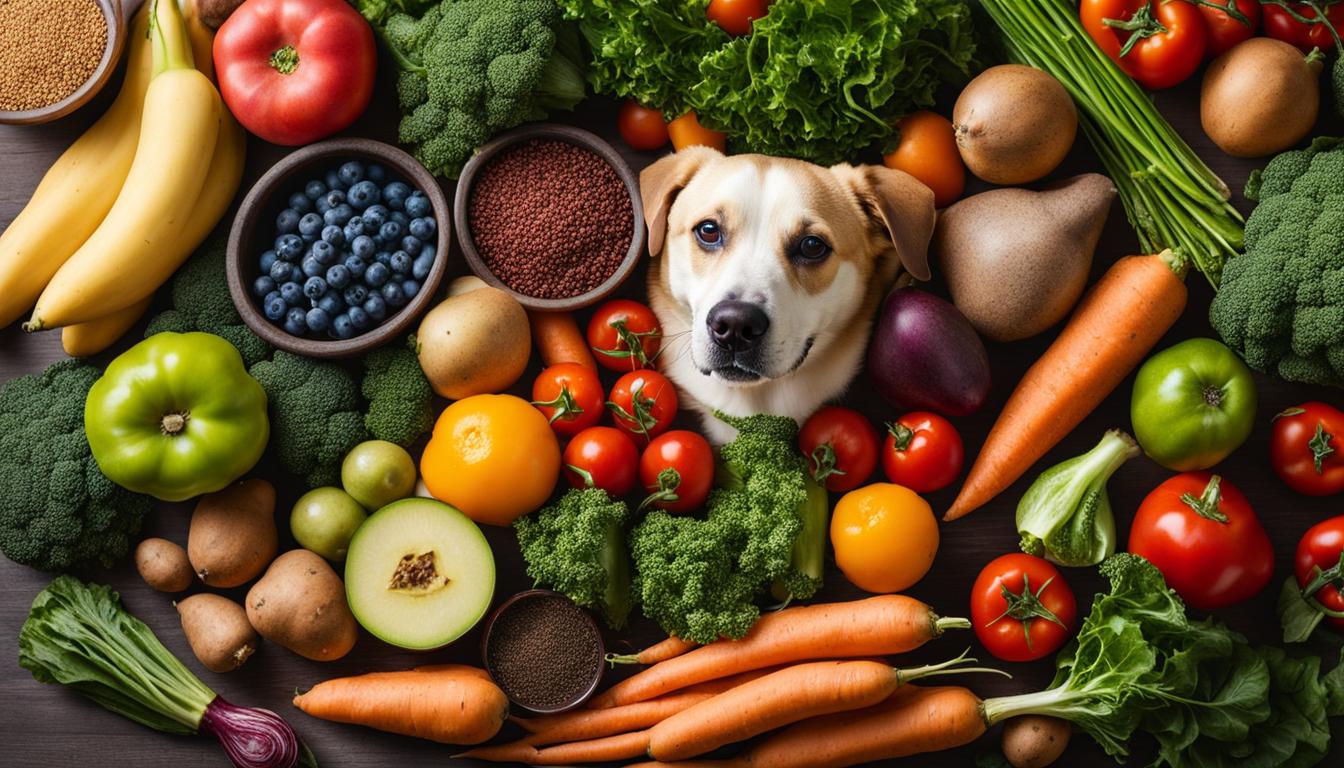When it comes to keeping your furry friend healthy, hydration is key. Just like humans, dogs rely on water to function properly and stay in top shape. But why is water so important in a dog’s diet?
Water is the main component of healthy, living cells in your dog’s body. It carries essential nutrients into and out of the cells, aids in digestion and nutrient absorption, regulates body temperature, lubricates joints, and even cushions the brain and spinal cord. In short, water is vital for your dog’s overall well-being.
Dehydration can have serious consequences for your furry friend. It can lead to muscle dysfunction, electrolyte imbalance, organ failure, and even death. And while dehydration can affect any dog, it is particularly common in older or sick pets, cats, and brachycephalic breeds.
So, how can you tell if your dog is dehydrated? Look out for signs such as moving slowly, tiredness, loss of appetite, sunken eyes, panting, and dry nose and gums. In cats, chronic dehydration can increase the risk of developing diabetes and kidney and liver failure.
To ensure your dog stays hydrated, make sure to monitor their water intake and provide fresh, clean water daily. Especially during hot months, it’s important to pay extra attention to their hydration needs. Consider adding multiple water bowls in different locations and investing in a pet drinking fountain to make water easily accessible.
Remember, proper hydration is crucial for your dog’s health and well-being. It’s always better to be safe than sorry, so if your dog shows signs of severe dehydration, seek immediate veterinary care. Your furry friend will thank you!
Key Takeaways:
- Water is vital for a dog’s health as it carries important nutrients, aids in digestion, and regulates body temperature.
- Dehydration can lead to muscle dysfunction, electrolyte imbalance, organ failure, and even death.
- Signs of dehydration in pets include moving slowly, tiredness, loss of appetite, sunken eyes, panting, and dry nose and gums.
- Monitor your pet’s water intake and provide fresh, clean water daily, especially during hot months.
- Invest in a pet drinking fountain and seek immediate veterinary care if your pet shows signs of severe dehydration.
The Role of Water in Canine Health
Water plays a crucial role in maintaining the health of dogs. It is essential for the proper functioning of cells, tissues, and organs. Water carries nutrients into and out of cells, helps regulate body temperature, and lubricates joints. Without adequate water intake, dogs can experience dehydration, which can lead to muscle dysfunction, electrolyte imbalance, and organ failure. Proper hydration is especially important for active dogs, as they lose water through exercise and heat dissipation. Chronic dehydration can have various negative effects on a dog’s health, such as an increased risk of developing certain diseases. Ensuring your dog stays hydrated is vital for their overall well-being.
The Importance of Hydration
Water is the lifeblood of your dog’s body. It is involved in almost every physiological process, from digestion to temperature regulation. Dogs need water to transport nutrients and oxygen to their cells, remove waste products from their bodies, and maintain the balance of electrolytes, which are essential for proper nerve and muscle function. Without enough water, your dog’s body cannot function optimally, leading to dehydration and potential health problems.
“Proper hydration is crucial for a dog’s health and well-being. Without enough water, dogs can become dehydrated, which can have serious consequences. It is important to ensure that your dog has access to clean, fresh water at all times and encourage them to drink regularly.”
Hydration and Active Dogs
If your dog is active, their water needs may be even higher. Exercise and physical activity increase water loss through panting and sweating (through their footpads). It is important to provide your active dog with plenty of fresh water before, during, and after exercise to maintain their hydration levels. You can also consider adding electrolytes to their water to replenish what is lost during intense activity. Monitoring your dog’s water intake and ensuring they have access to water during exercise is crucial for their performance and overall health.
The Importance of Water Quality
Water quality is another important factor to consider when it comes to your dog’s hydration. It is essential to provide your dog with clean, fresh water free from contaminants. Avoid allowing your dog to drink from stagnant water sources such as ponds or puddles, as these can contain harmful bacteria or toxins. If you are unsure about the quality of the water in your area, consider using a water filter or opting for bottled water for your dog. Providing safe drinking water is essential for maintaining your dog’s health and well-being.
Table: Signs of Dehydration in Dogs
| Signs of Dehydration | Description |
|---|---|
| Dry nose and gums | One of the most common signs of dehydration in dogs is dryness in the nose and gums. If your dog’s nose feels dry to the touch or their gums look sticky or pale, it may indicate dehydration. |
| Excessive panting | Panting is a normal cooling mechanism for dogs, but excessive panting can be a sign of dehydration. If your dog is panting heavily even when they are not exercising or in a warm environment, it could be a sign that they need more water. |
| Lethargy | If your dog is unusually tired or lacks energy, it could be a sign of dehydration. Dehydration can cause a decrease in blood volume, leading to reduced oxygen and nutrient delivery to the cells, resulting in lethargy or weakness. |
| Loss of appetite | Dehydration can cause a loss of appetite in dogs. If your dog is not interested in eating or shows a decreased appetite, it may be a sign that they are not adequately hydrated. |
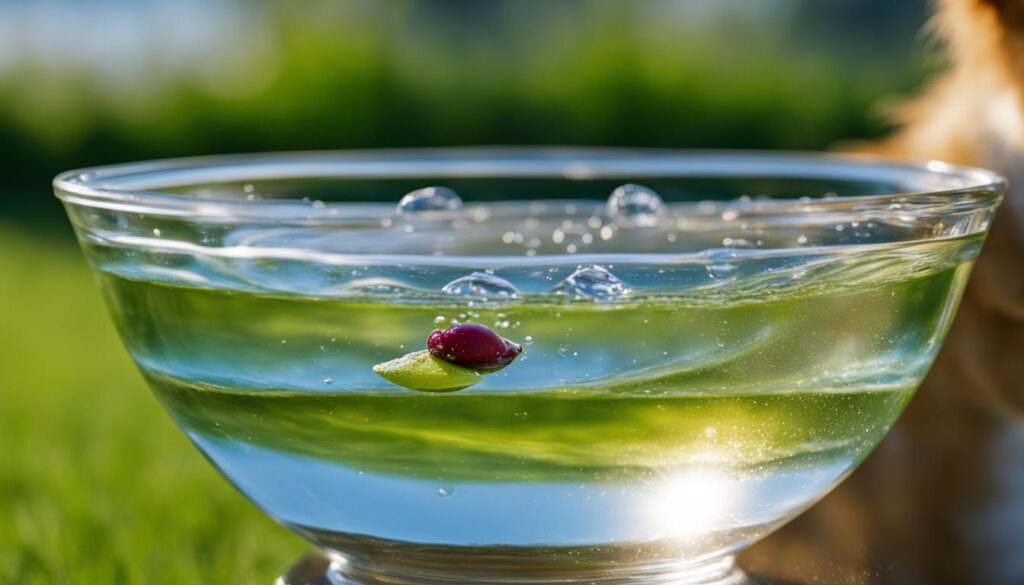
Factors Affecting Dog Water Intake
Several factors can influence a dog’s water intake. These factors include:
- Breed: Some dog breeds are prone to overheating or have specific hydration needs due to their physiology.
- Age: Puppies and senior dogs may have different water intake requirements than adult dogs.
- Activity Level: Dogs that are more active or engage in strenuous exercise may need more water to stay hydrated.
- Environmental Conditions: Hot and humid weather can increase a dog’s water needs.
Monitoring your dog’s water intake and adjusting accordingly can help ensure they stay properly hydrated and maintain optimal health.
Signs of Dehydration in Dogs
It is important to be able to recognize the signs of dehydration in dogs to ensure their well-being and prompt intervention when necessary. Dogs may not always drink enough water on their own, so monitoring their water consumption and observing any changes in behavior or physical appearance is crucial. Here are some common signs of dehydration to watch out for:
- Increased thirst
- Reduced or no appetite
- Lethargy or low energy levels
- Dry nose and gums
- Sunken eyes
- Panting excessively
- Dark urine or reduced urination
- Loss of skin elasticity
If your dog exhibits any of these symptoms, it is important to take action. Monitoring their water intake and ensuring they have access to fresh, clean water at all times is essential. Dehydration can lead to serious health complications and even become life-threatening if left untreated. If you suspect your dog may be dehydrated, it is best to seek immediate veterinary care to address the situation promptly.
Monitoring Water Consumption in Dogs
Tracking your dog’s water consumption can provide valuable insights into their hydration status. Keep a close eye on their water bowl to monitor how much water they are drinking throughout the day. If there is a significant decrease in water intake or if you notice any sudden changes in your dog’s behavior or appearance, it may be an indication of dehydration.
“Regularly checking your dog’s water bowl and observing any changes in behavior or physical appearance can help you identify potential dehydration early on.”
It’s also a good idea to measure the amount of water you pour into your dog’s bowl daily and note any changes in the quantity consumed. This information can help you identify patterns and provide useful information to your veterinarian if needed.
| Minimum Daily Water Intake | Dog’s Weight |
|---|---|
| 1 ounce per pound | 10 pounds |
| 2 to 3 ounces per pound | 10 to 30 pounds |
| 1 to 2 ounces per pound | 30 to 80 pounds |
| 1/2 to 1 ounce per pound | 80 pounds and above |
Remember, every dog is unique, and their water intake may vary based on factors such as breed, activity level, and the climate they live in. Consulting with a veterinarian can provide personalized guidance on your dog’s specific water consumption needs.
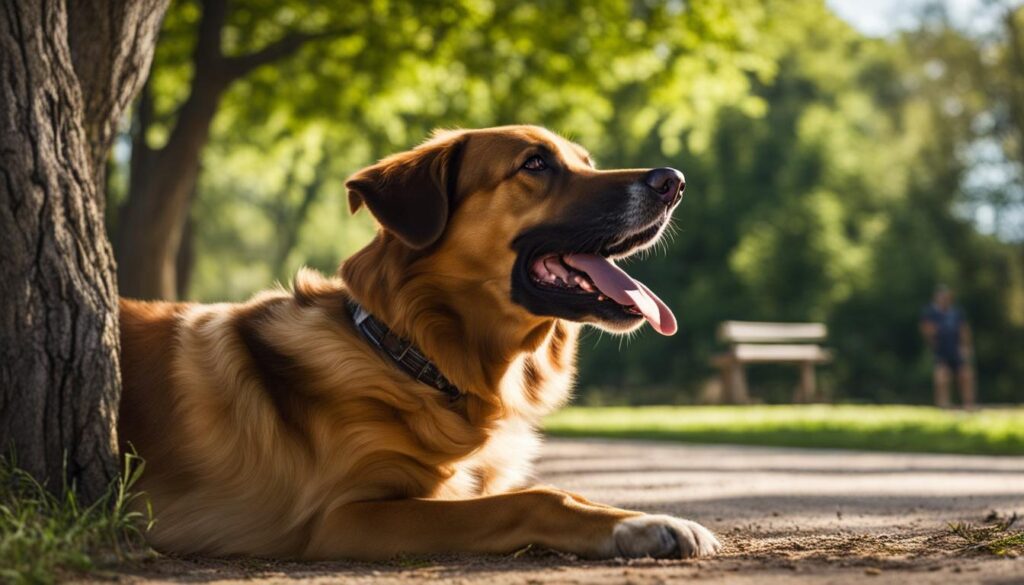
Hydration Tips for Active Dogs and Senior Dogs
Proper hydration is crucial for dogs of all ages and activity levels. Whether you have an energetic, active dog or a senior dog with specific hydration needs, here are some essential tips to help maintain their optimal hydration:
1. Carry Water on Outdoor Adventures
When taking your active dog on outings or adventures, it’s important to ensure they have access to water. Bring along a collapsible water bowl or a water bottle with a built-in dog-friendly drinking attachment. This way, you can offer them water during breaks to keep them hydrated and prevent dehydration.
2. Monitor Water Intake for Senior Dogs
As dogs age, their water intake may decrease, making them more prone to dehydration. Keep a close eye on your senior dog’s water consumption and ensure they have easy access to fresh water throughout the day. If you notice any changes in their drinking habits or signs of dehydration, consult your veterinarian for guidance.
3. Offer Hydrating Foods
In addition to providing fresh water, you can increase your dog’s hydration by incorporating hydrating foods into their diet. Canned foods, which have a higher water content compared to kibble, can help keep your dog hydrated. Consult your veterinarian for appropriate recommendations based on your dog’s specific dietary needs.
4. Use Multiple Water Bowls
Make water easily accessible for your dog by placing multiple water bowls in different areas of your home. This can encourage them to drink more frequently, especially on hot days or after physical activity when they may need extra hydration. Ensure the bowls are clean and filled with fresh water at all times.
Remember, proper hydration is crucial for your dog’s overall health and well-being. By implementing these tips, you can help ensure that your active dog and senior dog stay properly hydrated, leading to a happier and healthier life.
Safe Water Sources for Dogs
When it comes to ensuring your dog’s health and well-being, providing them with safe water sources is of paramount importance. Just like humans, dogs need access to clean and fresh water to stay hydrated and maintain their overall health. But where can you find safe water sources for your furry friend? Let’s explore some options:
Tap Water
Your home’s tap water can be a convenient and safe option for your dog’s hydration needs. Most municipal water supplies undergo rigorous testing to ensure they meet safety standards. However, it’s always a good idea to check with your local water utility or health department to confirm the quality of your tap water. If you have any concerns about the water quality or if you live in an area with known water contamination issues, consider using a water filter to remove impurities.
Bottled Water
If you prefer to provide your dog with bottled water, make sure to choose a brand that is specifically labeled for drinking. Avoid giving your dog carbonated or flavored water, as these can upset their stomach. When opting for bottled water, it’s important to consider the environmental impact of single-use plastic. If possible, look for brands that use sustainable packaging.
| Safe Water Sources | Pros | Cons |
|---|---|---|
| Tap Water | – Convenient – Typically safe – Cost-effective |
– Quality may vary – Potential contaminants |
| Bottled Water | – Portable – Consistent quality – Convenient for travel |
– Environmental impact – Cost |
| Filtered Water | – Removes impurities – Improves taste |
– Initial cost of filter – Maintenance |
Filtered Water
Using a water filter is another option to provide your dog with clean and safe hydration. Water filters can remove impurities such as chlorine, heavy metals, and other contaminants, improving the taste and quality of the water. There are various types of water filters available, including pitcher filters, faucet filters, and countertop filters. However, keep in mind that water filters require regular maintenance and filter replacements to ensure their effectiveness.
Remember, regardless of the water source you choose, always ensure that your dog has access to fresh and clean water throughout the day. Regularly clean their water bowl to prevent the buildup of bacteria or any other contaminants. By prioritizing your dog’s hydration and providing them with safe water sources, you can help promote their overall health and well-being.

Conclusion
Water is truly the unsung hero of your dog’s diet. It plays an incredibly important role in their overall health and well-being. From maintaining the function of their cells and organs to regulating body temperature and lubricating joints, water is essential for your furry friend. By prioritizing their hydration needs, you can help ensure that they stay healthy and happy.
Hydration Tips for Dogs
Here are a few tips to help you keep your pup properly hydrated. Firstly, make sure they always have access to fresh, clean water. Consider placing multiple water bowls around your home to make it convenient for them to take a sip whenever they feel thirsty. Investing in a pet drinking fountain can also encourage them to drink more. For a little extra hydration boost, you can add canned food to their diet, as it contains higher water content compared to dry kibble.
For active dogs, teaching them to drink from a water bottle or bringing collapsible water bowls on outings can ensure they stay hydrated on the go. And don’t forget about your senior dogs or those with specific hydration needs — pay attention to their water intake and make sure they have access to water throughout the day.
Monitoring and Seeking Veterinary Care
It’s crucial to monitor your dog’s water intake and be alert for signs of dehydration. If your dog is not drinking enough water, seems disoriented, or has pale gums, it’s time to seek immediate veterinary care. Dehydration can be a serious issue, and prompt attention is necessary to keep your dog healthy. Remember, prevention is always better than cure!
So, make water a priority in your dog’s life. By providing them with fresh, clean water, and following these hydration tips, you can ensure that they thrive and enjoy a long and happy life. Cheers to the importance of water in your dog’s diet!
FAQ
Why is water important for dogs?
Water is vital for a dog’s health as it is the main component of healthy, living cells in the body. It carries important nutrients into and out of the cells, aids in digestion and nutrient absorption, regulates body temperature, lubricates joints, improves cognitive function, and cushions the brain and spinal cord.
What are the signs of dehydration in dogs?
Signs of dehydration in dogs can include moving slowly, tiredness, loss of appetite, sunken eyes, panting, and dry nose and gums. Severe dehydration may result in disorientation, pale gums, and extreme lethargy.
How can I monitor my dog’s water intake?
It is important to monitor your dog’s water intake by providing fresh, clean water daily. You can also consider using multiple water bowls in different locations, investing in a pet drinking fountain, or adding canned food to their diet to increase their water consumption.
Can dehydration be life-threatening for dogs?
Yes, dehydration can be life-threatening for dogs. It can lead to muscle dysfunction, electrolyte imbalance, organ failure, and even death. If your dog shows signs of severe dehydration, it is crucial to seek immediate veterinary care.
How can I ensure my dog stays hydrated during hot months?
To ensure your dog stays hydrated during hot months, provide plenty of fresh, clean water and consider using a drinking fountain or bringing collapsible water bowls on outings. You can also teach your dog to drink from a water bottle or add canned food to their diet for increased water intake.
Can dehydration affect senior dogs differently?
Yes, chronic dehydration in senior dogs can increase the risk of developing diabetes and kidney and liver failure. It is important to monitor water consumption and ensure they have access to water.
Should I be concerned about the quality of water my dog drinks?
Yes, the quality of water your dog drinks is important. Ensure it is fresh, clean, and free from contaminants. Avoid letting them drink from potentially harmful water sources and consider using a water filter or bottled water if needed.

